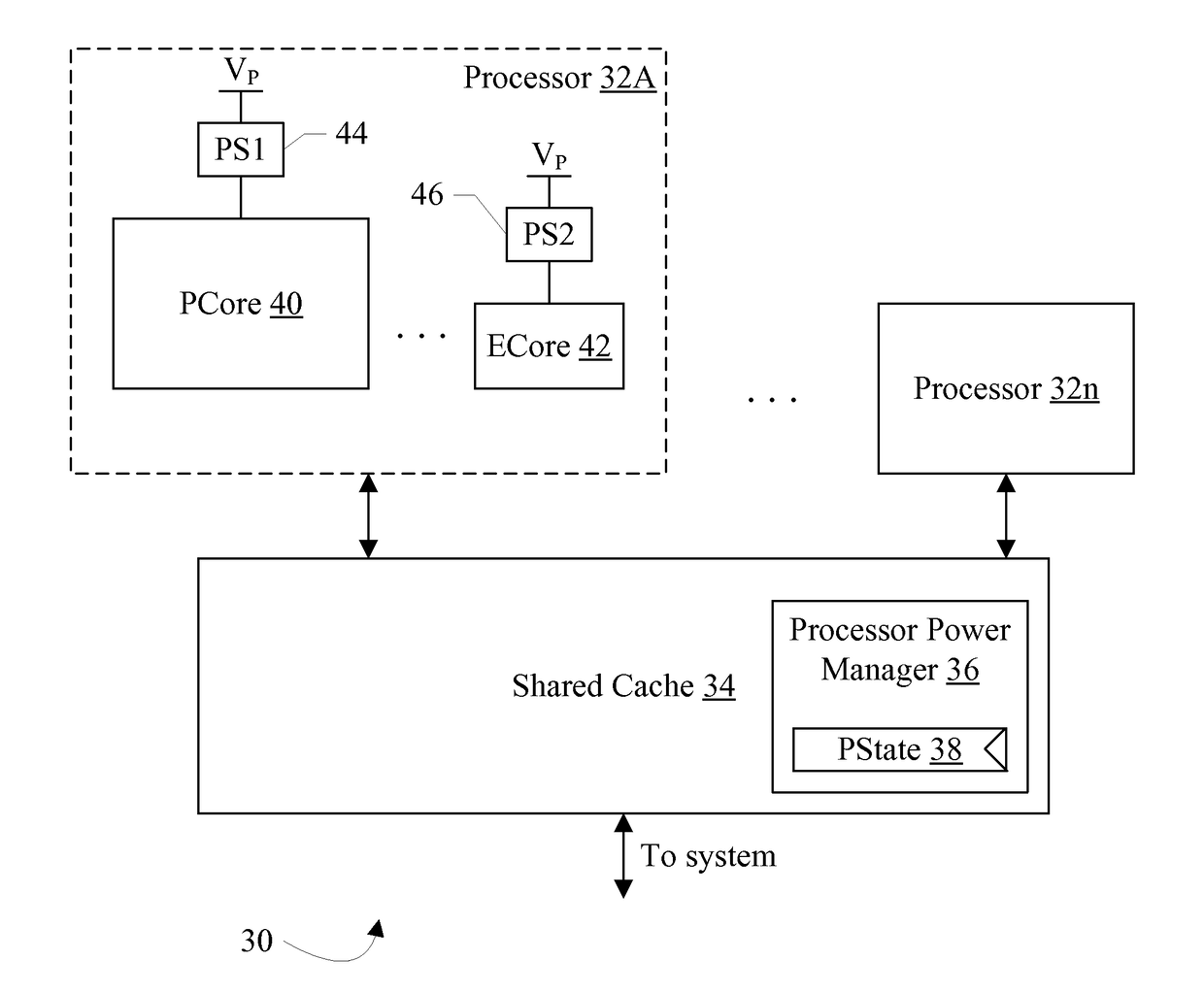Hardware Migration between Dissimilar Cores
a technology of dissimilar cores and hardware, applied in the field of processors, can solve the problems of reduced supply voltage, reduced performance, and lower operating point consumption, and achieve the effect of different design/implementation and performance levels, high performance, and higher minimum voltag
- Summary
- Abstract
- Description
- Claims
- Application Information
AI Technical Summary
Benefits of technology
Problems solved by technology
Method used
Image
Examples
Embodiment Construction
Processor Overview
[0023]FIG. 1 is a block diagram of one embodiment of a processor cluster 30. In the illustrated embodiment, multiple processors 32A-32n and a shared cache 34 are included.
[0024]The processors 32A-32n are coupled to the shared cache 34, which is further coupled to communicate with other elements of a system that includes the cluster 30. In the illustrated embodiment, the shared cache 34 includes a processor power manager 36 that includes a PState register 38 storing a PState for the processors 32A-32n. Each processor 32A-32n may have its own independent PState, groups of processors 32A-32n may share a PState, or the cluster 30 may have a shared PState for the processors 32A-32n, in various embodiments. Processor 32A is shown in more detail in FIG. 1 to include at least two processor cores, a performance core (PCore) 40 and an efficient core (ECore) 42. Other embodiments may include additional cores. Each core 40 and 42 is coupled to a power supply rail (VP) through ...
PUM
 Login to View More
Login to View More Abstract
Description
Claims
Application Information
 Login to View More
Login to View More - R&D
- Intellectual Property
- Life Sciences
- Materials
- Tech Scout
- Unparalleled Data Quality
- Higher Quality Content
- 60% Fewer Hallucinations
Browse by: Latest US Patents, China's latest patents, Technical Efficacy Thesaurus, Application Domain, Technology Topic, Popular Technical Reports.
© 2025 PatSnap. All rights reserved.Legal|Privacy policy|Modern Slavery Act Transparency Statement|Sitemap|About US| Contact US: help@patsnap.com



